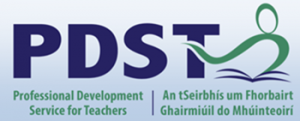| Divide and Conquer | Understanding long division of polynomials | Algebra, Functions | 2nd | OL |
| Step by Step | Students use physical manipulatives to derive and understand the cosine rule | Trigonometry | 5th | HL |
| What’s the point? | Students make connections between linear patterns , coordinate geometry and real world scenarios | Geometry | 1st | Common |
| What’s The Meaning Of Z-scores | Students build on their prior knowledge of mean and standard deviation to understand and use z scores | Probability, Statistics | TY | HL |
| Top Dog Area | Students deduce different shapes from a word problem using different area and perimeter formulae. Connections are made between trigonometry and generalisation using algebraic notation. | Algebra, Geometry, Number | 5th | OL |
| Simultaneous Shapes | Students progress from the concrete, to the pictorial, to the abstract, solving simultaneous equations using multiple strategies. | Algebra, Functions | 2nd | HL |
| Missing In Action | Students use the idea of equality to form, interpret and solve equations. Students are asked to describe, explain and justify their method for doing this. | Algebra, Functions | 1st | Common |
| Looks Different, Same Value | Students develop a deeper understanding of equivalent fractions and add and subtract algebraic fractions. | Algebra, Functions | 2nd | HL |
| Explain that Formula | Students explore properties of 3-dimensional shapes and use nets to understand where the surface area formula of a cylinder comes from. | Number | 5th | OL |
| Across the divide | Students work on real life word problems where the operation of division is presented in different ways | Number | 2nd | Common |
| It’s Show Time | In this lesson, students will try to solve problems relating to time, and to enhance their understanding and reading of time. | Number | 1st | OL |
| What’s your Angle? | Pupils will be presented with 2 parallel lines and 5 points (A, B, C, D and E). Angle ABC is 110 ̊ and CDE is … | Geometry, Trigonometry | 3rd | HL |
| Percentage Paradox | Structured problem solving lesson involving multiple approaches to a direct proportion percentages problem. Misconceptions around percentage equations are addressed leading to considering an algebraic approach. | Number | 1st | Common |
| A Pizza of the (Fr)Action | Students are given a problem to consolidate their learning of adding fractions and to apply this to the addition of fractions with a variable. | Algebra | 1st | Common |
| What about Parallelograms | Exploring properties of parallelograms using various approaches and looking for connections between these approaches | Geometry | 1st | Common |
| Thinking Outside the Triangle | Using a given diagram to lead students to the discovery of the proof that the exterior angle in a triangle is equal to the sum … | Geometry | 1st | Common |
| The Volume of Money | Through discovery, students derive the formula for the volume of a cylinder. This is achieved through examining the area of a circle (2D) and linking … | Number | 2nd | HL |
| The X Factor | Exploring different ways to represent factorisation of a single algebraic term leading to factorising a two term linear expression. | Algebra | 1st | Common |
| The Power that Lies Beneath | Using Assessment for learning techniques of multiple choice diagnostic testing and effective questioning to explore index rules | Number | 2nd | HL |
| The Array Model | Using the Array Model to factorise quadratic expressions. This proposal includes a unit plan for expanding and factorising in algebra and making important connections. | Algebra | 2nd | HL |
| Straight to the nth Game | Using a problem question to develop the general formula for a pattern | Algebra | 1st | Common |
| Show Me the Money | Discovering the different measures of central tendency using celebrities as examples | Statistics | 2nd | OL |
| Scrutinizing the Difference between Two Squares | This proposal uses the concepts from ‘Algebra through the lens of functions’ to bring students to the discovery of the difference of two squares using … | Algebra | TY | Common |
| Run Johnny Run, Maths To The Rescue | Using prior knowledge of triangles to explore trigonometric ratios and use them to solve problems. | Trigonometry | 2nd | HL |
| Point Of Pick-Up | Using prior knowledge of algebra, coordinate geometry, synthethic geometry and constructions the fairest position for a bus stop is to be located from an aerial … | Geometry | 5th | OL |
| Place Your Pix | Using the problem of placing a picture in a frame, students discover the difference between two squares | Algebra | 2nd | OL |
| Matchstick Challenge | This lesson is based on first year patterns, introducing students to the concept of the general term. | Number | 1st | Common |
| It’s Show Time | | Probability, Statistics | 1st | OL |
| In The Air | Using a word problem to graph functions | Functions | 5th | Common |
| How Big Is Pi? | Using varying circles to discover pi and use this discovery to create the formula for the circumference of a circle using different methods. | Geometry | 1st | Common |
| Getting To The Problem Of The Root | Identifying relationships between quadratic equations, roots and graphs | Functions | 2nd | HL |
| Get Unsnookered | Using a mix of Geometry, Trigonometry and Coordinate Geometry to solve a real-world problem. | Geometry, Trigonometry | 5th | HL |
| Forthnightly Maths | In a computer game context, students will have to identify intersecting points between a line and a curve using a variety of methodologies. | Functions | 6th | OL |
| Express My Point | Students will be introduced to the concept of writing mathematical expressions and exploring values for a fixed variable in two league tables. | Algebra | 1st | Common |
| Equating Fortnite-ly | Using word problems in algebra to introduce equations | Algebra | 1st | Common |
| Disco Taxi | Using a word problem to introduce transformations of quadratic functions and establishing the algebraic representation of the function. | Functions | 2nd | Common |
| Circling Longitude | A real life scenario of a drone taking a photo at a music festival is presented. Students are tasked with finding the best possible position … | Geometry | 5th | OL |
| Car Savings Conundrum | Students act as a financial advisor and must investigate a number of saving plans to advise their client how long it will take to save … | Number | 3rd | FL |
| Basket Case | Introducing simultaneous equations through word problems and solving by graphing | Algebra, Functions | 2nd | Common |
| All Aboard Quadratic Airlines | This lesson provokes students understanding of how quadratic graphs relate to their equation and how they can relate to other similar equations | Functions | 3rd | HL |
| A Journey in Finance | Modelling a financial problem using a geometric series and investigating the timeline assosciated with payments | Number | 6th | HL |
| 2 or not 2x that is the question | This lesson provides a physical approach to the understanding of ‘like’ and ‘unlike’ terms. | Algebra | 2nd | OL |
| A Step in the Right Direction | This lesson introduces students to trigonometric ratios. | Trigonometry | 2nd | HL |
| Who is being Irrational? | After calculating some distances using Pythagoras students will work towards the discovery and understanding of irrational numbers. | Number | 2nd | HL |
| When Area is 64 | Students are presented with an area problem and by exploring their solutions they will see that all the information pertaining to the problem may be … | Functions | 2nd | Common |
| What’s your Angle? | Through exploring relationships in triangles, students will discover that the exterior angle of a triangle is equal to the sum of the two interior opposite … | Geometry | 1st | Common |
| Untangles the Angles | Using various methods students will discover different relationships between the angles in a diagram based on parallel lines. | Geometry | 1st | Common |
| Unpacking 3D Shapes | Students will examine a square based pyramid, identify all 2D shapes possible using the points given and find the areas of these shapes. | Geometry, Trigonometry | 5th | HL |
| Transversals are Copycats | Given a diagram with three parallel lines and three transversals, students will use their knowledge of geometry to identify existing relationships between pairs of angles, … | Geometry | 6th | HL |
| Top of the Vlogs | Students will present two sets of data in graphic form and will learn that there are more than one way to represent data. | Probability, Statistics | 2nd | Common |
| Time for Telly | Students will learn to deal with problems of time by solving a problem based on when a film of given duration will end if advertisements … | Number | 3rd | FL |
| The Trapezoidal Rule | Students will engage with a problem to find the area of an irregular shape and by doing so will find a formal method for dealing … | Geometry, Number, Trigonometry | TY | Common |
| The Story of Two Drones | Students will be asked to apply their knowledge to solve a real life scenario of two drones on a collision course. | Geometry, Trigonometry | 5th | OL |
| The Story of the Gannet | Students will describe the story of a gannet’s dive as represented by a quadratic graph using words, the parameters of height and time and mathematical … | Functions | 2nd | HL |
| The Integers Cup | Students will develop understanding of integer operations by solving a problem based on a game of golf. | Number | 1st | Common |
| The Great Wall of Nenagh | Problem solving approach to link Patterns, Co-ordinate Geometry and Algebra. | Algebra, Functions, Number | 2nd | HL |
| The Grand Rational | Students are given an algebraic fraction and are asked to uncover as many properties of the fraction as they can using algebraic procedures, tables and … | Functions | 5th | HL |
| The Ex Factor | Through a problem-solving approach, students find the sum of exterior angles of a triangle in as many ways as possible. | Geometry | 2nd | HL |
| The Balancing Act | Introducing Simultaneous Equations through problem solving. | Algebra | 2nd | OL |
| The Formula Speaks Volumes | Students will explore the volume formula for cuboids and develop a formula for volume of all prisms leading to the discovery of the formula for … | Number | 2nd | HL |
| The Flow of Money | Students will try to solve a tax problem with higher and standard rate of tax, to enhance their understanding of how tax works. | Number | 2nd | HL |
| Takeaway Translation | In this lesson students will try to solve a word problem using a variety of methods and will discover that such problems can be solved … | Algebra | 2nd | Common |
| Subway Substitution | Students are presented with a menu and asked to use an algebraic expression to describe the bill. | Algebra | 1st | Common |
| Snowflakes | Students will be challenged to express repeating linear patterns algebraically. | Algebra | 3rd | HL |
| Simultaneously solving for two variables | Students will be given two linear equations with two unknown variables and will be required to solve for the two unknown variables using as many … | Algebra | 2nd | Common |
| Similar Triangle Wrangle | Students will be using dotted paper to produce similar triangles and understand that a line parallel to a side produces similar triangles. | Geometry, Trigonometry | 2nd | Common |
| Shootin’ Hoops | Students will be provided with a calculus question that requires them to utilize their algebraic knowledge of roots to construct the pathway of a basketball. | Algebra, Number | TY | Common |
| Sharing the Unknown | Students will understand the need for algebraic fractions when dealing with basic real-world problems. | Algebra, Number | 2nd | HL |
| Run Circles Around Pythagoras | Students will be asked to find as many Pythagorean pairs when c is 5 leading to the discovery of the equation of a circle. | Geometry, Trigonometry | 5th | OL |
| Pump Up The Volume | Students will use various strategies to transform different irregular solids into familiar cuboids and thus calculate the volume. | Geometry, Number | 2nd | OL |
| The Power of Algebra | Students will be presented with a simultaneous linear functions problem and encouraged to solve the problem in a variety of ways. | Algebra | 2nd | HL |
| Plane Clothes | Students solve a problem on the area of a triangle in as many ways as possible. The solutions help form connections between geometry and coordinate … | Geometry, Number, Trigonometry | 2nd | HL |
| Percentages Predicament | Students tackle a percentage increase problem to understand the concept of ‘more than 100%’. | Number | 2nd | Common |
| Paving Patterns | Students are encouraged to examine patterns in various ways to derive connections between linear patterns, equations and graphs. | Algebra, Functions, Number | 3rd | HL |
| Patterns in Polygons | Students use their prior knowledge of geometry and linear patterns to write a mathematical statement describing the relationship between the sum of the angles and … | Geometry, Number | 2nd | HL |
| Partying with Indices | Through an exponential growth problem it is hoped that students will recognise the usefulness of indices in such situations and discover the first law of … | Number | 2nd | HL |
| Paper Ratio | Students will be given A3, A4 and A5 sheets of paper and asked to investigate any relationships between them in as many ways as possible. | Number | 2nd | Common |
| Murling | Students will work with a real world problem involving establishing the distance from the origin and roots of a quadratic function. | Algebra, Functions | 2nd | Common |
| Multiplying Messi’s Millions | In this lesson students will investigate models and use the concept of a “thought experiment” in a real life context to illustrate the operation of … | Number | 1st | Common |
| Monkey Puzzle | Students develop an understanding of the properties of fractions through a real-life problem. | Number | 2nd | Common |
| Meet You Halfway | Students are given a photograph of Sligo town with a coordinate grid superimposed on it. They are asked to find the location which is halfway … | Geometry | 2nd | Common |
| Make-Up Money | Students will solve a problem based on saving money. By discussing the various approaches used it is hoped that students will identify connections between several … | Algebra, Functions, Number | 2nd | HL |
| M.M.A. Mixed Mathematical Approaches | Students will formulate the area of the first floor (rectangle) of Conor Mc Gregor’s holiday home in Las Vegas. | Probability, Statistics | TY | Common |
| Kevin’s Cash Connundrum | Students will show in many ways how to represent a word problem which will lead to an algebraic equation. Following this they will solve an … | Algebra | 1st | Common |
| Katie versus Conor – Who will win? | Students explore probability and relative frequency by considering who would win in a fight between Katie Taylor or Conor McGregor. | Probability, Statistics | 2nd | Common |
| Justifying your Thinking | Students are challenged to explain why one Electricity contract is better value than another by describing a graph of their pricing structures. | Number | 3rd | Common |
| It’s Thirsty Work | Students will learn to interpret graphs by investigating the flow of liquid into three different containers. | Number | 2nd | HL |
| It’s a Matter of Principles | Students investigate the rate of change of a rocket whose path is modelled by a quadratic function. | Functions | 5th | HL |
| It’s Moore of a Process | Students investigate Moore’s Law in order to apply their understanding of Logarithms and Exponential Functions andhow they are related to each other. | Functions, Number | 5th | HL |
| How much is the special Offer? | Students will be presented with a real life problem verbally and visually and will learn to recognise how to solve a simultaneous equation using elimination. | Algebra | 2nd | Common |
| Heavenly Slopes | Students will engage in structured problem solving to develop their understanding of the “slope” of a line, and of the relationships between the slopes of … | Geometry, Trigonometry | 5th | OL |
| Going underground on a Roller Coaster | Students are introduced to quadratic relationships via an in-context problem. | Algebra, Functions | 2nd | Common |
| Fractions meet Algebra | Students will learn to apply their knowledge of fractions and equations to the solving of equations involving algebraic fractions. | Algebra, Number | 2nd | HL |
| Elf on the Shelf | Students will use their knowledge of trigonometry, synthetic geometry and their problem solving skills to find the angle of depression from a point. | Geometry, Trigonometry | 3rd | HL |
| Diving for Roots | Students are introduced to quadratic equations from a functions point of view and will use this to make connections to the algebraic method(s) for factorising … | Algebra, Functions | 2nd | HL |
| Dining Out – Who Gets your Money | “In this lesson students will complete a problem to find out how much a meal costs before tax is added by finishing this question they … | Number | 3rd | HL |
| Cuir Cruth Air | Trí a bheith ag plé le léaráid ina bhfuil triantáin agus cearnóga, tiocfaidh na daltaí ar ghaol idir a n-achair. Tabharfaidh an gaol seo dóibh … | Geometry, Number, Trigonometry | 2nd | Common |
| Cover the Distance Faster | Students apply their knowledge and understanding of coordinates, calculating length and Pythagoras’ Theorem to calculate the distance between two points, with the intention they will … | Geometry, Trigonometry | 2nd | HL |
| Count like an Egyptian | Students are given a problem and asked to explore different approaches leading them to query the difference between multiplication and addition. | Algebra | 2nd | OL |
| Box Bonanza | Students work on the problem of calculating the number of matchsticks in a structure which leads to developing linear expressions. | Algebra | 1st | Common |
| Baby it’s cold outside | The aim of this lesson is consolidate students’ knowledge of how to solve a quadratic equation algebraically and graphically whilst also drawing on students’ prior … | Algebra, Functions | 5th | HL |
| Are we there yet? | Students are encouraged to solve a problem by finding the midpoint between two points. This can be achieved in many ways. Through Ceardaíocht students will … | Geometry, Trigonometry | 2nd | HL |
| Are you up for the Match? | The aim is for the students to discover the Fundamental Principal of Counting through problem solving using all previous knowledge to extend their learning into … | Probability | 1st | Common |
| Are Circles Pointless | In this lesson students will actively participate in solving a problem that will progress towards understanding, recognising and applying the equation of the circle | Geometry, Trigonometry | 5th | HL |
| Getting Value for Money | Students will try to solve a problem involving currency exchange set in a real life situation. | Number | 2nd | Common |
| Angles to find the Treasure | The students will be given a map with three different routes to treasure for three pirates. Students must identify the routes and calculate the distances … | Geometry, Trigonometry | 3rd | HL |
| 2D or not 2D? | The lesson focuses on students designing an open rectangular box when given the area of its base and total surface area of the box. | Geometry, Trigonometry | 2nd | HL |
| 2D to 3D… That is the Question? | Students will be presented with a problem in which they need to select and use appropriate knowledge from the different strands in maths, and decipher … | Algebra, Functions, Geometry, Number, Probability, Statistics, Trigonometry | 5th | OL |
| Prof. Takahashi’s Lesson Proposal | Through a series of problems, students learn about the conditions required for congruency (includes student worksheets). | Geometry | 1st, 2nd | Common |
| Introducing Differential Calculus | Developing an understanding of key calculus concepts using rates of change. | Functions | 6th | OL |
| The Polygon Predicament | Connecting multiple mathematical topics to solve a geometric problem. | Algebra, Functions, Geometry, Number, Probability | 6th | HL |
| The Perfect Selfie | Using geometry and trigonometry to solve a 3D problem. | Geometry, Trigonometry | 5th | HL |
| Developing Frieda’s Field | Developing the formula for the area of a non-right-angled triangle. | Geometry, Trigonometry | 5th | OL |
| Enter the Matrix | Solving a multi-variable problem using many methods. | Algebra | 5th | OL |
| The General Term of a Quadratic Pattern | Using multiple strategies to develop the formula for a quadratic relationship. | Algebra, Functions | 5th | OL |
| Heading for Trouble | Learning how to deal with a two-variable problem where one relationship is noon-linear. | Algebra | 5th | OL |
| Navigating an Ash Cloud | Drawing on algebra, geometry and trigonometry to solve a problem. | Algebra, Geometry, Trigonometry | 5th | HL |
| The Water Rocket | Analysing quadratic relationships using multiple strategies. | Algebra, Functions, Number | 5th | HL |
| What makes a Parallelogram | Using trigonometry & geometry to calculate the area of a parallelogram. | Geometry, Trigonometry | 5th | OL |
| Tick Tock – Area of an Incircle | Use the properties of an equilateral triangle to find the area of its incircle. | Geometry, Trigonometry | 5th | HL |
| Seeing through the Dab | Applying trigonometry to solve a 3D problem. | Geometry, Trigonometry | TY | Common |
| Decoding De Moivre | Understanding the concepts of rotations and scales which underpin De Moivre’s Theorem. | Algebra, Number, Trigonometry | TY | Common |
| How many ways can you prove It? | Understanding the construction of the bisector of an angle. | Geometry, Trigonometry | 3rd | HL |
| Centre of a Rectangle | Students draw on many topics to find the centroid of a rectangle. | Geometry, Trigonometry | 3rd, 5th | HL, OL |
| Comparing Percentages, Decimals & Fractions | Calculate the percentage and fraction of a number in many ways. | Number | 3rd | OL |
| Coordinate Geometry meets Synthetic Geometry | Using coordinate geometry, theorems, corollaries and constructions to show a quadrilateral is a rectangle. | Geometry, Trigonometry | 3rd | HL |
| Picture this Quadratic | Modelling images using quadratic functions and understanding the importance of roots. | Algebra, Functions | 3rd | HL |
| Transformation Trickery | Applying knowledge of transformations for problem-solving. | Geometry | 3rd | HL |
| 3D Cubes | Identifying right-angled triangles in 3D solids to solve problems. | Geometry, Trigonometry | 3rd | HL |
| Anyone for Pizza – Solving Simultaneous Equations | Modelling problems with simultaneous equations and how elimination can be used to solve them. | Algebra | 2nd | HL |
| Coffee and Tea Simultaneously | Solving a two-variable problem using different techniques. | Algebra, Geometry | 2nd | HL |
| An Average Problem | Understand the properties of different measures of average. | Statistics | 2nd | HL |
| The Cookie Crumbles | Moving from area to volume in a uniform solid. | Number | 2nd | OL |
| Into the Next Dimension | Understanding the relationship between cross-sectional area and volume for a uniform solid. | Number | 2nd | OL |
| Equivalent Fractions | Students learn to compare fractions using graphical methods. | Number | 2nd | OL |
| More Pizza for me | Using scaling to compare different quantities fairly. | Number | 2nd | OL |
| Pragmatic Quadratic | Calculating the area of a shape with unknown dimensions. | Algebra, Functions | 2nd | HL |
| Rich, Happy, Healthy or Famous | Using Census @ School data to compare methods for analysing data. | Statistics | 2nd | Common |
| Roots and Shoots | Calculating the dimensions of a shape given its area in general terms. | Algebra, Functions | 2nd | HL |
| Tri to be Shady | Using many approaches to calculate an unknown area. | Geometry, Number | 2nd | HL |
| The Window Maker | Using two-variable problems to develop simultaneous equations. | Algebra | 2nd | HL |
| Grazing Gazelles | Discovering Pythagoras’s Theorem. | Geometry, Trigonometry | 2nd | OL |
| Tin of Beans | Using the concept of cross-sectional area to change area of a circle into volume of a cylinder. | Number | 2nd | HL |
| Translating Words into Symbols | Using different operations to develop the same number. | Algebra, Number, Probability | 1st | Common |
| An Alternative Approach to Alternate Angles | Problem solving to demonstrate that alternate angles are equal in measure. | Geometry | 1st | Common |
| Are you Snookered? | Use axioms and theorems to calculate a pair of missing angles. | Geometry | 1st | Common |
| Perimeter of an Irregular Shape | Calculating perimeter of a shape with known and unknown lengths. | Algebra, Number | 1st | Common |
| Home and Away | Understanding distance-time graphs. | Algebra, Number | 1st | Common |
| A Tough Climb | Understanding the concept of slope. | Geometry, Trigonometry | 1st | Common |
| Mary’s Age | Applying linear equations to problems. | Algebra | 1st | Common |
| Perfecting Percentages | Understanding the usefulness of percentages in understanding proportion. | Number | 1st | Common |
| Count the Sweets | Students apply algebraic reasoning to problem-solve a linear relationship. | Algebra, Number | 1st | Common |
| The Chocolate Challenge | Using equivalent fractions to decide which unit quantity is greatest. | Number | 1st | Common |
| The Great Hall | Using linear relationships to develop algebraic thinking. | Algebra | 1st | Common |
| The Problem with Cats & Dogs | Learning to use Venn Diagrams as a problem-solving tool. | Number | 1st | Common |
| What’s your Angle? | Applying knowledge of axioms and theorems to calculate missing angles. | Geometry | 1st | Common |
| Working with Fred Pattern-Son | Using a visual pattern to introduce linear relationships. | Algebra | 1st | Common |
| Introducing Algebra & Word Equations | Applying algebraic reasoning to in-context problems. | Algebra | 1st | Common |
| Let’s think about BIDMAS | Applying order of operations to generate different numbers. | Number | 1st | Common |
| Dogs do Patterns | Using a real-life problem to develop an understanding of linear relationships. | Algebra, Number | 1st | Common |
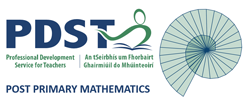




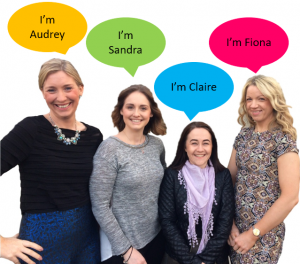
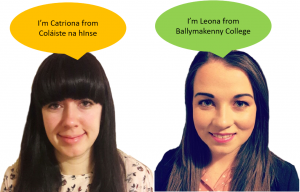
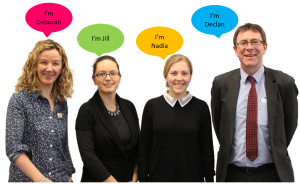
 Professor Akihiko Takahashi wowed us for the second year running with his teaching of Geometry using structured problem solving to first-year students from Maynooth Education Campus (incorporating Maynooth Post-Primary School and Maynooth Community College). You can download Professor Takahashi’s lesson plan and student worksheets in our
Professor Akihiko Takahashi wowed us for the second year running with his teaching of Geometry using structured problem solving to first-year students from Maynooth Education Campus (incorporating Maynooth Post-Primary School and Maynooth Community College). You can download Professor Takahashi’s lesson plan and student worksheets in our 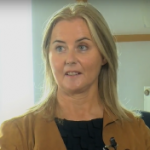 Dr. Anne Brosnan of the Maths Development Team gave a keynote address on the role that lesson study has played in supporting Irish teachers to incorporate structured problem solving into their maths lessons. Dr. Brosnan outlined the growth of the Maths Development Team’s lesson-study programme and how its continuation can go a long way to equipping our students with the mathematical skills required for 21st-century life. You can
Dr. Anne Brosnan of the Maths Development Team gave a keynote address on the role that lesson study has played in supporting Irish teachers to incorporate structured problem solving into their maths lessons. Dr. Brosnan outlined the growth of the Maths Development Team’s lesson-study programme and how its continuation can go a long way to equipping our students with the mathematical skills required for 21st-century life. You can 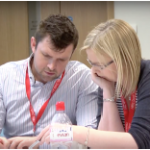 Teachers who participated in Lesson Study 2016-2017 hosted interactive workshops where they gave audience members the chance to try out their problem-solving lesson, discussed their students’ reaction to the lesson and discussed the many ways in which they benefited from being involved in lesson study. All the lesson proposals and problems presented during the workshops are available in our
Teachers who participated in Lesson Study 2016-2017 hosted interactive workshops where they gave audience members the chance to try out their problem-solving lesson, discussed their students’ reaction to the lesson and discussed the many ways in which they benefited from being involved in lesson study. All the lesson proposals and problems presented during the workshops are available in our 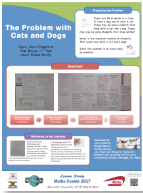 The 250+ maths teachers who participated in Lesson Study 2016-2017 produced a total of 52 lesson proposals. The lesson proposals were summarised by 52 posters which were displayed throughout Maths Counts 2017. All 52 lesson proposals are available for download in our
The 250+ maths teachers who participated in Lesson Study 2016-2017 produced a total of 52 lesson proposals. The lesson proposals were summarised by 52 posters which were displayed throughout Maths Counts 2017. All 52 lesson proposals are available for download in our 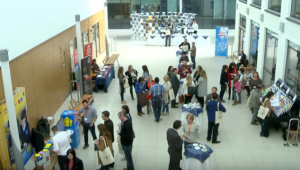 Thank you to our sponsors, Microsoft and Build-Up for sponsoring Maths Counts. Thanks you to all our exhibitors who provided teachers with lots of useful information about the latest resources for teaching maths.
Thank you to our sponsors, Microsoft and Build-Up for sponsoring Maths Counts. Thanks you to all our exhibitors who provided teachers with lots of useful information about the latest resources for teaching maths.
